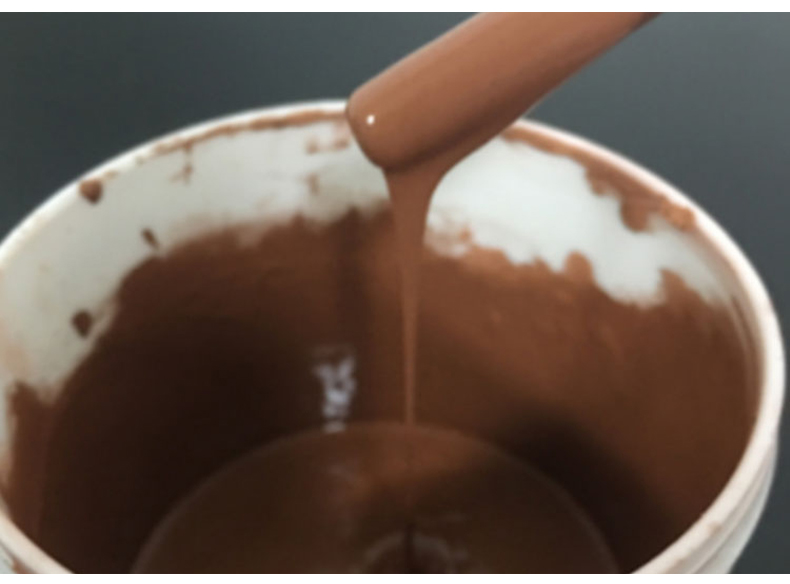1、 Introduction: The Importance and Challenges of Copper Conductor Paste
In the rapid development of modern technology, materials with excellent conductivity are crucial for the development of the electronics industry. As a common conductive material, copper powder
electronic pasteWidely used in. Compared with other metal fillers, copper powder has the advantages of low cost and excellent conductivity, especially with conductivity similar to silver, which has made copper paste one of the research hotspots in many industries.
However, copper is chemically active and easily oxidized in contact with air or high temperature environments, producing difficult to conduct copper oxide or cuprous oxide, leading to an increase in electrical resistivity. This problem restricts the application of copper paste in the electronics industry. In order to overcome this challenge, advanced scientific and technological researchers are currently committed to finding solutions to the problem of copper oxidation.
2、 Copper surface modification methods: multiple choices, each with its own characteristics
To solve
Copper pasteAt present, four common methods for copper surface modification have been proposed and widely studied to address the issue of oxidation.
1. Organic coating: This method involves coating organic molecules on the surface of copper powder to form a protective film, which isolates the copper powder from contact with air and prevents oxidation reactions from occurring. This method is simple and cost-effective, but over prolonged use, organic matter may gradually decompose, leading to a weakened protective effect.
2. Acid washing treatment: Acid washing treatment is achieved by forming a thin film of copper oxide on the surface of copper powder, and then corroding this thin film to restore the copper surface to its metallic state. This method can effectively remove copper oxide, improving the conductivity of copper. However, acid washing treatment requires the use of corrosive agents and has a certain degree of environmental pollution.
3. Coating with inert metals: Coating a layer of inert metals such as nickel, zinc, etc. on the surface of copper powder to form a protective layer that prevents the copper powder from coming into contact with the surrounding environment. This method can effectively improve the antioxidant capacity of copper, but in practical applications, the coating layer is prone to peeling off, thereby reducing the long-term stability of the method.
4. Organic phosphating: Organic phosphating is the reaction of phosphate compounds with copper powder to form a stable copper phosphate compound protective film. This method has excellent stability and antioxidant properties, and can improve the conductivity of copper. However, the use of phosphates may cause certain pollution to the environment.
 III
Silver coated copper conductive paste
The vast prospect
III
Silver coated copper conductive paste
The vast prospect
Among various copper surface modification methods, silver coated copper conductive paste is considered a low-cost and high safety alternative to composite metal conductive paste, with broad application prospects in flexible printed electronics and photovoltaic fields.
Silver coated copper conductive paste forms a structure similar to "copper coated silver" by wrapping a layer of micrometer sized silver on the surface of copper powder. This structure not only protects copper powder from oxidation, but also utilizes the conductivity of silver to further improve the overall conductivity. Compared to other surface modification methods, silver coated copper conductive paste has better oxidation resistance and conductivity.
In the field of flexible printed electronics, silver coated copper conductive paste can be used as a high-quality conductive material for making flexible circuit boards, flexible display screens, etc. These products not only have the characteristics of being lightweight and flexible, but also can achieve high-speed signal transmission and stable conductivity.
In addition,
Silver coated copper conductive pasteIt also has a wide range of applications in the field of photovoltaics. By coating silver coated copper conductive paste as electrode material, the conductivity of solar cells can be improved, the photoelectric conversion efficiency can be enhanced, and the preparation cost of silver coated copper conductive paste is lower than that of pure silver conductive paste, making it more economical and practical.
In summary, as a common and low-cost conductive material, copper has a wide range of application prospects. By adopting appropriate surface modification methods, especially silver coated copper conductive paste, the oxidation resistance and conductivity of copper can be effectively improved. This has brought enormous potential for the development of flexible printed electronics and photovoltaics, as well as new breakthroughs and opportunities for the application of copper conductor paste.





